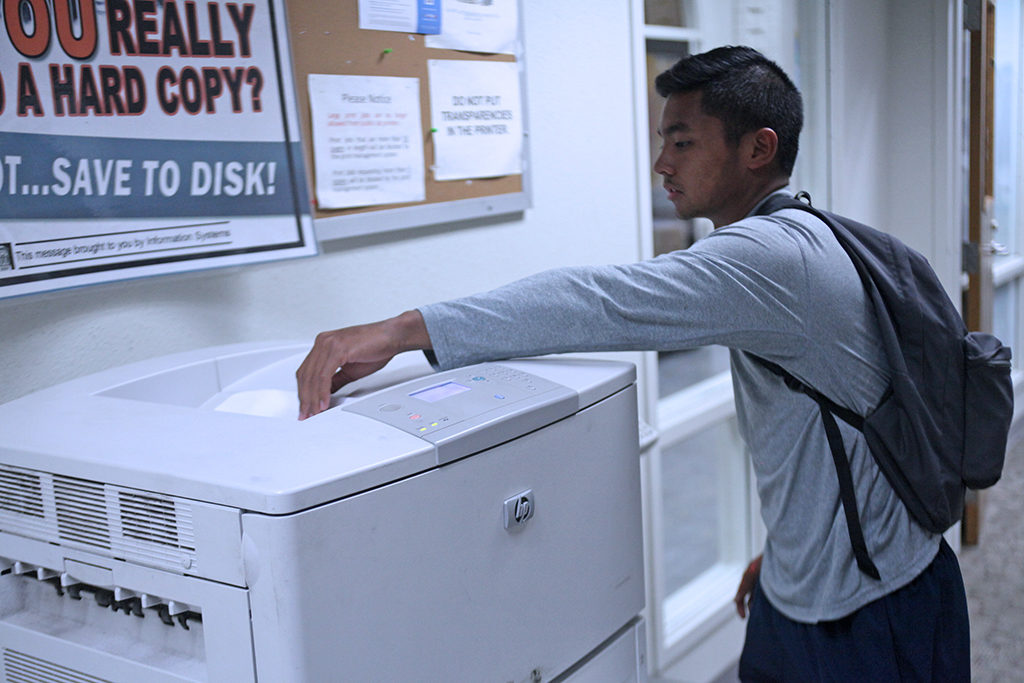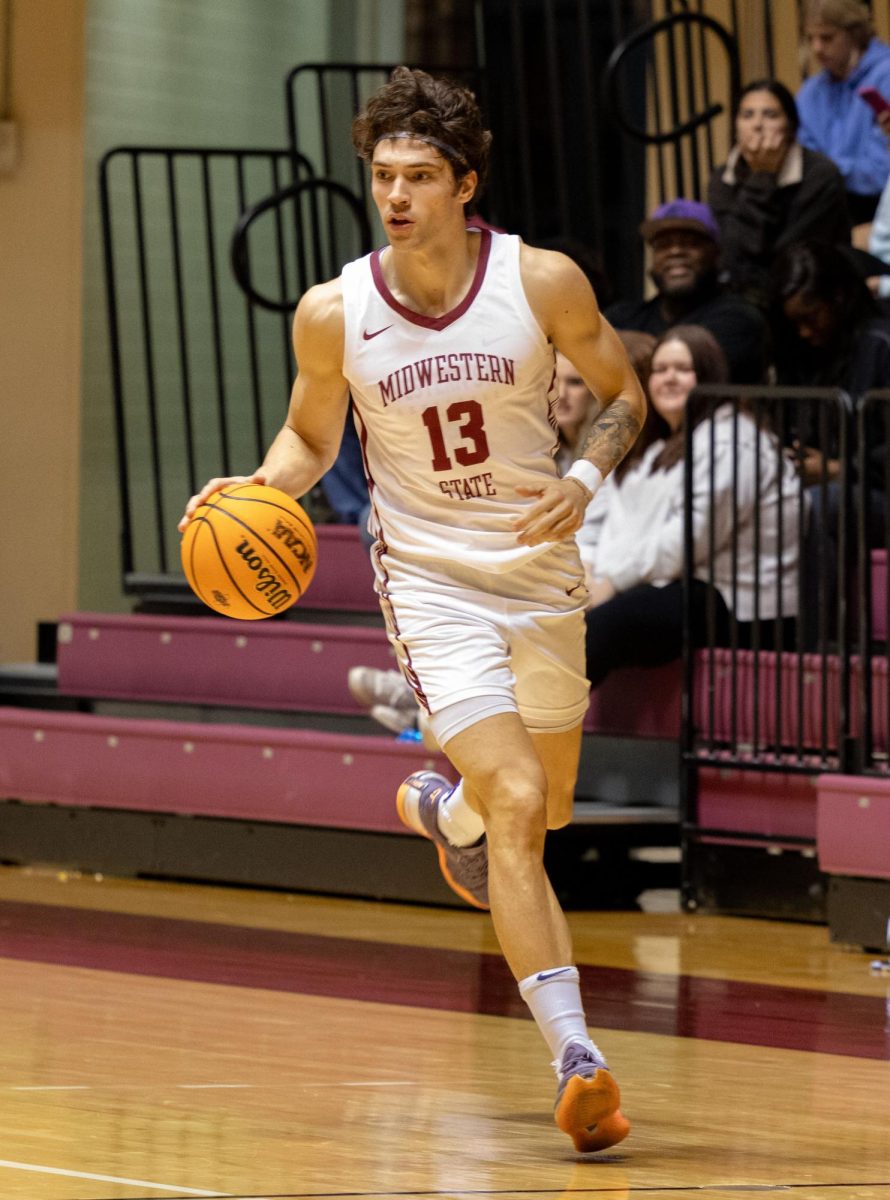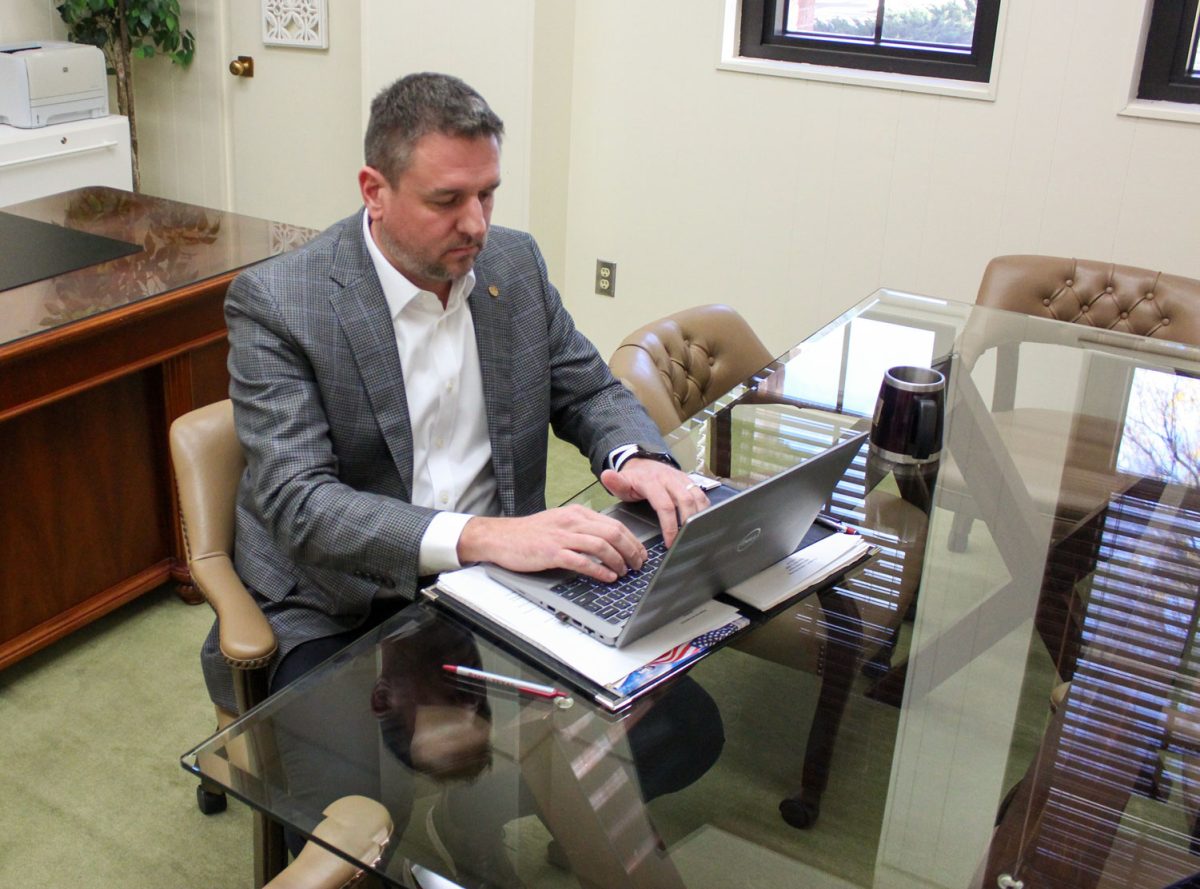
Ten people in line are waiting for an available printer. Class starts in five minutes. The person in front is printing 50 pages. The four printers available to students and faculty members around campus are often busy. The recycle bins under the printer have more paper than the actual printer.
The Information Technology Department wants to develop a more functional and efficient printing system that students can take advantage of. A rumor spread through campus about students paying for every printed copy starting from fall 2017, scaring the student population. David Sanchez, chief information officer, reassures student that no extra fees are going to apply in the fall, dispelling this rumor.
“It is definitely a wrong rumor,” Sanchez said. “We started looking at other printing providers, such as WePA, because we want to expand and improve printing efficiency on campus.”
Future improvements
The main idea Sanchez and the IT department have in mind is to incorporate better technology to facilitate the process for students.
“Technology can bring multiple solutions to printing on campus,” Sanchez said. “Students would be able to use their own devices or just log in to their accounts to print their material.”
WePA, We Print Away, is a company that provides printing stations for various campuses across the nation. The advantages include printing from anywhere around campus, “Cloud” storage (similar to iCloud) for files, personal accounts where files can be uploaded and more. It would also help with real-time monitoring and reporting, reducing waste, lowering costs and the university would not have to furnish all printers, toners, paper and other supplies needed. Normally, universities that adopt this method require students to pay for their own copies. However, the IT department officials are trying to manage a system where a reasonable number of copies will be allowed to students each semester without additional charges.
“Students don’t have to pay for printing [right now], and we don’t want to disappoint them by charging for printing starting next semester,” Sanchez said. “We are simply trying to maximize benefits and minimize wastage.”
Alden Thompson, radiology senior, said that printing on campus is one of the best services available to students.
“The fact that we have free printing on campus is very convenient,” Thompson said. “It might be one of the best tools for students. Most of my friends who go to other universities are always surprised when I tell them we don’t have to pay for it.”
Thompson also said a technological improvement, such as WePA, would be a great thing that students could benefit from.
Current excessive printing
Students have a cap of 1,000 copies each semester. Lidenia Clarke, Spanish junior and student center computer lab assistant, said this number is adequate to the needs of students.
“I don’t think 1,000 copies per semester is too much,” Clarke said. “I know especially nursing students always need to print a lot. Some of my friends who are in this field always exceed the maximum of copies allowed.”
Sometimes excessive printing isn’t only students’ fault, and it can be encouraged by faculty staff. Eirini Kontaki, sports and leisure sophomore, said some of her professors recommended printing the power point slides for better in-class note taking.
“I don’t think I print too much paper,” Kontaki said. “But it happened before that some of my professors highly encouraged all students to print out the slides for the class so we could take better notes.”
On the other hand, Sanchez said, based on last semester’s data, this number can be lowered without affecting the majority of students.
“Last semester, 5 percent of the students printed 23 percent of the total amount, which is basically a quarter of all printing of the semester,” Sanchez said. “We believe that lowering the cap would only affect students who print excessive amounts of papers, which usually include materials not related to school or [printing] entire books.”
According to Sanchez, last year students printed 2.2 million pages among the four printers available, with an average of 259 pages per student in the fall semester. He added that University of New Mexico’s students [about 25,000] printed about the same amount of copies, but among 30 printers. Sanchez said that a reason for this is that UNM students, as in many other campuses around the country, have to pay for their copies, making them more responsible about printing.
“The advantage is that at UNM, knowing they have to pay for their own copies, makes students more thoughtful,” Sanchez said.
Wastage
Being more thoughtful about printing could result in a reduced wastage and better environmental sensibility. Currently Clarke said there is no wastage of paper in the computer lab.
Sanchez has a contrasting opinion on the subject. IT department members put paper recycle bins under the printers to monitor paper wastage, recording an amount they didn’t expect. After talking to the Student Government body members, Sanchez would like to promote a Green project, encouraging sensitivity regarding paper waste and therefore reducing costs.
“I talked to the Student Government members and we agreed that paper waste can be reduced,” Sanchez said. “We want to collaborate and create a Green program to help students and the university save some paper and money.”
These reforms are still a ‘work in progress,’ and the IT department is comparing various providers and ideas to improve printing efficiency on campus. Consequently, students don’t have to expect any changes in the near future, and surely not starting next semester.












